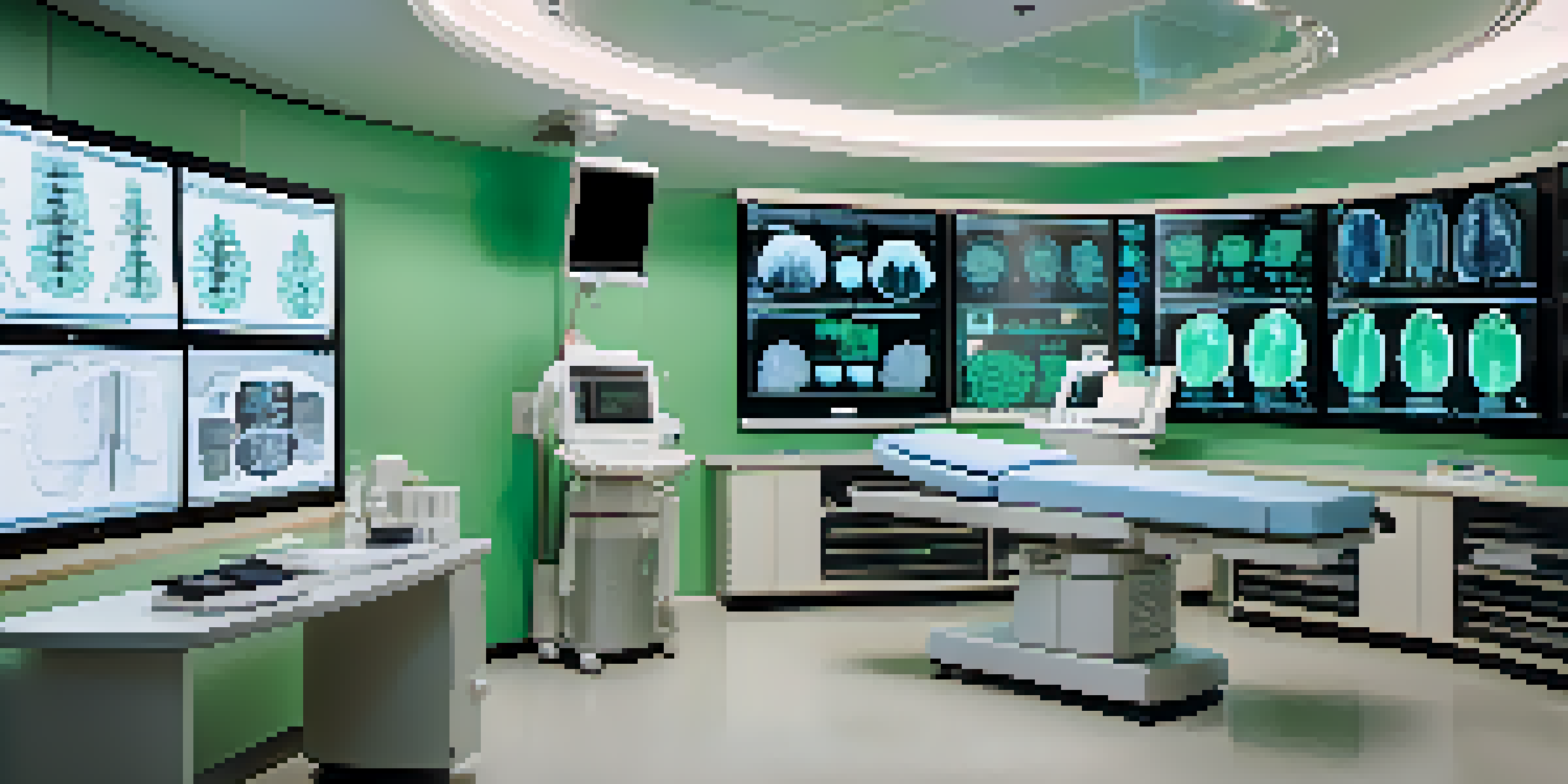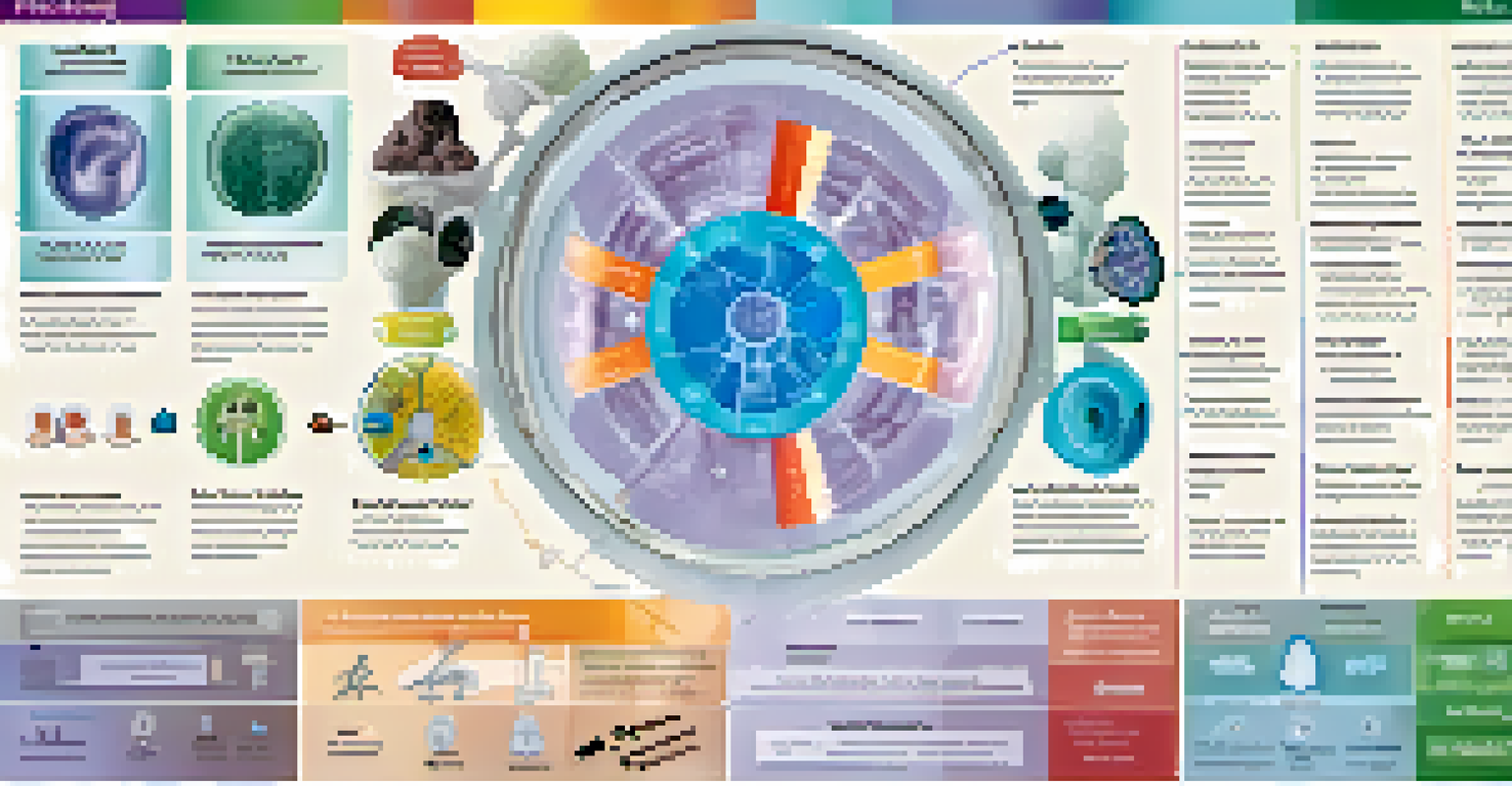Radiology in Oncology: Imaging's Role in Cancer Treatment

Understanding Radiology's Role in Oncology
Radiology is a branch of medicine that uses imaging technologies to diagnose and treat diseases, including cancer. In oncology, it plays a crucial role in detecting tumors, determining their size, and assessing their spread throughout the body. By providing detailed visualizations, radiology helps oncologists make informed decisions about patient care.
Radiology is the backbone of modern oncology, providing the insights necessary for accurate diagnosis and effective treatment planning.
Imaging technologies such as X-rays, CT scans, MRIs, and PET scans are pivotal in identifying cancer at various stages. Each method offers unique benefits, enabling doctors to tailor their approach based on individual patient needs. This personalized aspect of radiology is what makes it indispensable in effective cancer management.
Moreover, the integration of radiology in oncology enhances the accuracy of treatment planning. It allows for precise localization of tumors, which is essential when considering surgical interventions or targeting therapies. With this information, healthcare providers can optimize treatment strategies and improve patient outcomes.
The Importance of Early Detection Through Imaging
Early detection of cancer significantly increases the chances of successful treatment. Radiology plays a critical role in identifying cancerous lesions before they become symptomatic. Regular screenings using imaging techniques can lead to the discovery of tumors at an earlier, more treatable stage.

For instance, mammography has proven effective in detecting breast cancer early, allowing for timely interventions. Similarly, low-dose CT scans are recommended for high-risk individuals to screen for lung cancer. These examples illustrate how proactive imaging can save lives by catching cancer in its infancy.
Radiology Aids Early Cancer Detection
Imaging techniques like mammography and CT scans significantly enhance the chances of identifying cancer at an earlier, more treatable stage.
Furthermore, early detection through radiology not only improves survival rates but can also reduce the extent of treatment required. When cancers are smaller and localized, less aggressive treatments may be necessary, which can lead to better quality of life for patients. This underscores the essential role of imaging in cancer prevention strategies.
Imaging Techniques Used in Cancer Diagnosis
Various imaging techniques are employed in oncology, each serving a distinct purpose. X-rays are often the first step in evaluating potential tumors, while CT scans provide detailed cross-sectional images of the body. MRIs, on the other hand, offer excellent soft tissue contrast, making them invaluable for examining brain and spinal tumors.
The earlier we detect cancer, the better our chances are for successful treatment and patient survival.
Positron Emission Tomography (PET) scans are particularly noteworthy as they can reveal not only the presence of cancer but also its metabolic activity. This helps in assessing how aggressive the cancer is and whether it is responding to treatment. Such insights are crucial for oncologists when determining the best course of action.
Additionally, ultrasound imaging is frequently used in guiding biopsies, allowing doctors to obtain tissue samples from suspicious areas accurately. By understanding the strengths and limitations of each imaging technique, healthcare professionals can make the most informed decisions possible for their patients.
Radiology's Role in Treatment Planning
Once a cancer diagnosis is made, radiology continues to play a pivotal role in treatment planning. Detailed imaging helps oncologists develop tailored treatment approaches based on the specific characteristics of the tumor and its location. This ensures that the selected therapies are as effective as possible.
For example, in radiation therapy, precise imaging is essential for targeting the tumor while minimizing damage to surrounding healthy tissues. Techniques such as 3D conformal radiation therapy rely on advanced imaging to create detailed treatment plans. This precision not only improves outcomes but also reduces side effects.
Imaging Guides Treatment Planning
Detailed imaging helps oncologists develop tailored treatment approaches, ensuring therapies are effective while minimizing damage to healthy tissues.
Furthermore, imaging is used to monitor treatment progress, allowing oncologists to adjust therapies as needed. By regularly assessing how well a treatment is working through follow-up scans, doctors can make timely decisions that could significantly impact a patient's recovery journey.
The Impact of Radiology on Monitoring Treatment Response
Monitoring how a cancer responds to treatment is vital for adjusting care plans effectively. Radiology provides the tools necessary to visualize changes in tumor size and activity, helping oncologists gauge whether a treatment is effective. Regular imaging allows for a dynamic approach to cancer care.
For instance, if imaging reveals that a tumor is shrinking following chemotherapy, this may indicate that the treatment is working. Conversely, if no change is observed, oncologists may consider alternative therapies. This adaptability in treatment plans is made possible through the insights provided by imaging technologies.
Additionally, radiology can also help detect any potential complications early on, such as secondary tumors or treatment-related side effects. This proactive monitoring ensures that patients receive comprehensive care throughout their cancer journey, ultimately leading to better health outcomes.
Advancements in Radiology for Cancer Treatment
The field of radiology is continually evolving, with advancements significantly enhancing cancer treatment. Innovations such as artificial intelligence (AI) are being integrated into imaging analysis, allowing for faster and more accurate interpretations of scans. This can lead to earlier diagnoses and improved treatment strategies.
Moreover, new imaging techniques, like functional MRI and advanced PET imaging, provide deeper insights into tumor biology and behavior. These advancements not only inform treatment decisions but also contribute to ongoing research efforts aimed at understanding cancer better and developing more effective therapies.
Collaboration Improves Patient Outcomes
The teamwork between radiologists and oncologists fosters a holistic approach to cancer care, enhancing decision-making and treatment effectiveness.
As technology progresses, the future of radiology in oncology looks promising. Enhanced imaging capabilities will likely lead to even more personalized treatment approaches, ensuring that patients receive the most appropriate care tailored to their unique circumstances.
The Collaborative Role of Radiologists and Oncologists
The relationship between radiologists and oncologists is crucial for effective cancer treatment. Collaboration between these specialists ensures that imaging findings are accurately interpreted and integrated into the overall treatment plan. This teamwork fosters a holistic approach to patient care.
Radiologists provide detailed reports and insights from imaging studies, which inform oncologists about tumor characteristics and changes over time. This information allows oncologists to make informed decisions regarding the most appropriate therapies for their patients, leading to better outcomes.

Furthermore, regular multidisciplinary meetings where radiologists and oncologists discuss cases can enhance the treatment process. These discussions facilitate the sharing of expertise, ultimately leading to more comprehensive cancer care. The synergy between these professionals is essential for navigating the complexities of cancer treatment.